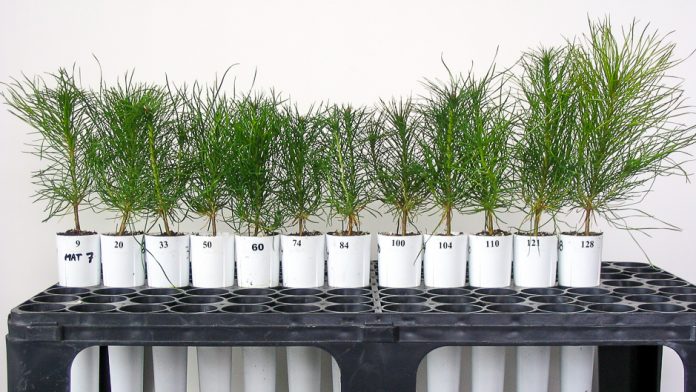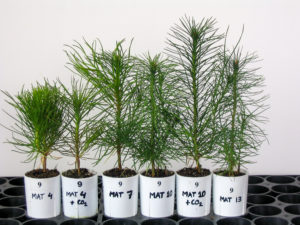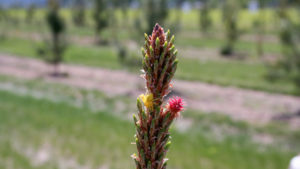In British Columbia, 250 million trees a year are replanted; 70% of which come from seed produced in seed orchards. Back in the 90s, some lodgepole pine seed orchards weren’t always producing enough seed. To figure out why, seed orchard managers began collecting data from their trees, including when pollen was flying and when they were receptive to pollen. For years, workers went out and took measurements from many orchards with trees selected from natural stands all over the province. The seed orchard managers finished their project, the reports were written up, and the now-unneeded data was tucked away in filing cabinets and on hard drives. Some orchards continued collecting data to further improve their understanding of seed set and to be used in case something else went wrong, carefully storing it every year.
When we picture scientists collecting data, we usually think of someone in a white coat mixing solutions in beakers or perhaps someone writing measurements on a clipboard in the middle of a seed orchard. But what happens after that data is collected and the papers are written?
The hunt for data
Long after the seed orchardists put their data away, I started wondering about how pollen movement could influence how well different populations of trees were adapted to their environments and what climate change could do to change that. Local adaptation means that lodgepole pine populations grow best close to where they come from: lodgepole from cold places grow best in cold places and lodgepole from warmer places grow best in warmer places.
Lodgepole pine from the same location grown under different conditions.
As the climate changes, trees are no longer matched up with their favorite climate – the place with the cold-loving trees is now warmer. If seeds from trees in warmer places dispersed there, then we wouldn’t be very worried about the future of that population. But while lodgepole pine seeds don’t travel very far, lodgepole pine pollen does. I want to know if pollen connects populations in ways that will help them adapt to a new climate. The first step to figuring out which populations are connected is figuring out when populations make pollen and can receive pollen. If this isn’t timed right, there’s no chance trees from different populations can mate and share adaptations.
I needed data on pollination phenology to figure out the timing but was worried I wouldn’t be able to answer my questions; as a PhD student, I couldn’t see how it would be possible to collect enough data.
An old dataset meets a new problem
But BC’s seed orchardists and their dedicated workers had already collected everything I needed. Instead of going into the forest or growing trees in a greenhouse or working in a lab to collect data, I sent emails. Seed orchard managers at the Prince George Tree Improvement Station and the Kalamalka Research Station responded, taking the time to dig up old records from their own and other orchards and carefully answer my questions. Their colleagues volunteered related environmental records kept at the stations. Retired forestry workers chatted with me on the phone and dug up hard-to-find reports to help me gain the understanding I lacked from not spending a decade in the orchards myself. Now I have what I need to move forward.
Receptive cone on lodgepole pine with spider.
Teaching old data new tricks
This data was already used once to help improve seed yield for reforestation. Now I’m putting all of it together to answer questions about adaptation and what will happen to our forests as the climate changes.
The questions I could answer with this dataset seem endless. I’m not even using everything they collected! So I plan to publish not only my findings, but the combined dataset from all the seed orchards so other scientists can take advantage of this fantastic resource the seed orchards created. Who knows what we’ll discover?
Preserving and sharing data takes time and money, as does building long term data sets like this. But the effort pays off as the data gets used again and again to answer new and pressing questions.







































